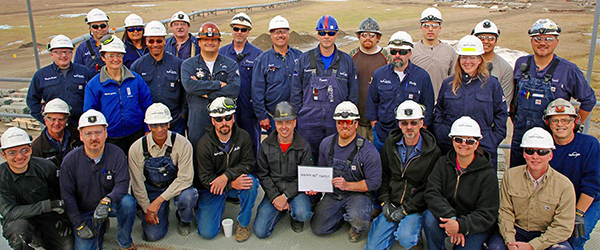Pump Station 4
Pump Stations

TAPS Operations
Pump Stations
Strategically built and located pump stations have moved more than 18 billion barrels of oil down TAPS since startup. TAPS was originally designed to operate with 12 pump stations, but only 11 were built due to overall pumping efficiency (PS 11 was only built with maintenance facilities). With today’s lower throughput levels and Electrification & Automation (E&A) upgrades to the stations, only four pump stations are needed today.
- Pump Stations 1, 3, 4 and 9 currently pump oil through TAPS. Pump Stations 3, 4 and 9 are retrofitted with new E&A pumps and equipment. Pump Station 1 was the last to come online with new pumps, cutting over from its legacy pumping equipment in October 2015.
- Pump Station 2 ramped down July 1, 1997.
- Pump Station 5 is a relief station, providing a mechanism to relieve the pressure that builds up in the pipeline as the oil descends down Atigun Pass.
- Pump Station 6 is now the Yukon Response Base, providing equipment, housing and staging areas for Alyeska’s oil spill response crews in Northern Alaska.
- Pump Station 7 is on warm standby and part of Alyeska’s cold restart contingency plan, providing a means to inject heat into the pipeline during a protracted and unexpected shutdown.
- Pump Station 8 ramped down June 30, 1996.
- Pump Station 9 operates as both a pump station and the Delta Response Base (DRB). The DRB provides equipment and staging areas for oil spill response crews in interior Alaska.
- PS 10 ramped down July 1, 1996. It is the first TAPS pump station to be demolished, with that project starting in 2019 and completed in 2020.
- Pump Station 11 is home to the Glennallen Response Base, providing equipment and staging areas for oil spill response crews along the southern portion of the pipeline.
All of the response bases support one another, and response crews annually drill and practice techniques along the pipeline corridor.



